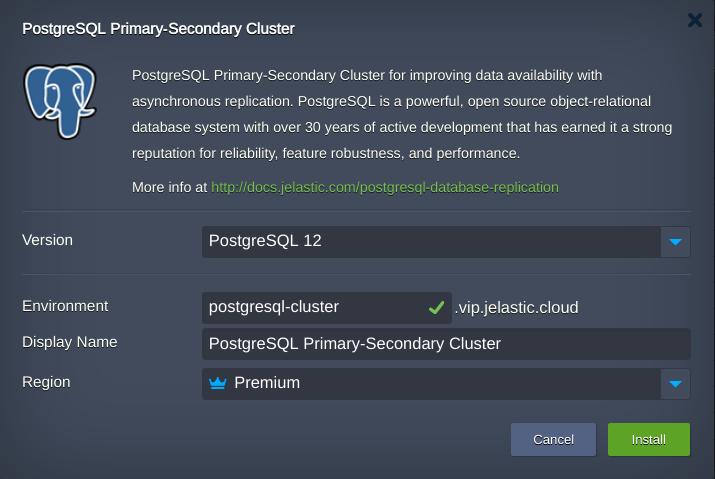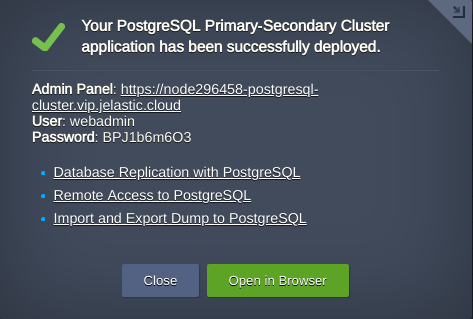Basic ready-to-use PostgreSQL cluster, which implements asynchronous primary-secondary data replication within a pair of preconfigured database containers.
The presented PostgreSQL Replication solution is built upon Jelastic certified stack template for PostgreSQL. It operates two database containers (primary and secondary, one per role) and makes data from primary DB server to be asynchronously replicated to a standby one.
Within the package, each database container receives the vertical scaling up to 32 dynamic cloudlets (or 4 GiB of RAM and 12.8 GHz of CPU) that are provided dynamically based on the incoming load. Subsequently, you can change the resource allocation limit by following the above-linked guide.
In order to get PostgreSQL Database Replication solution instantly deployed, click the Deploy to Jelastic button below and specify your email address within the opened widget. Then choose one of the Jelastic Public Cloud providers (in case you don’t have an account at the appropriate platform, it will be created automatically) and press Install.
To install the package manually, log in to the Jelastic dashboard with your credentials and import link to the manifest.yaml file (alternatively, you can locate this package via Jelastic Marketplace, Clusters section)
Within the opened installation window, type Environment name and optional Display Name (environment alias). Also, select the preferable Region (if several ones are available) and click Install.
Wait a few minutes for Jelastic to prepare your environment and set up the required replication configurations. When finished, you’ll be shown the appropriate notification with data for PostgreSQL administration interface access.
This information will be also duplicated to you via email.
To find more details on PostgreSQL Replication package installation and use, refer to the article.



